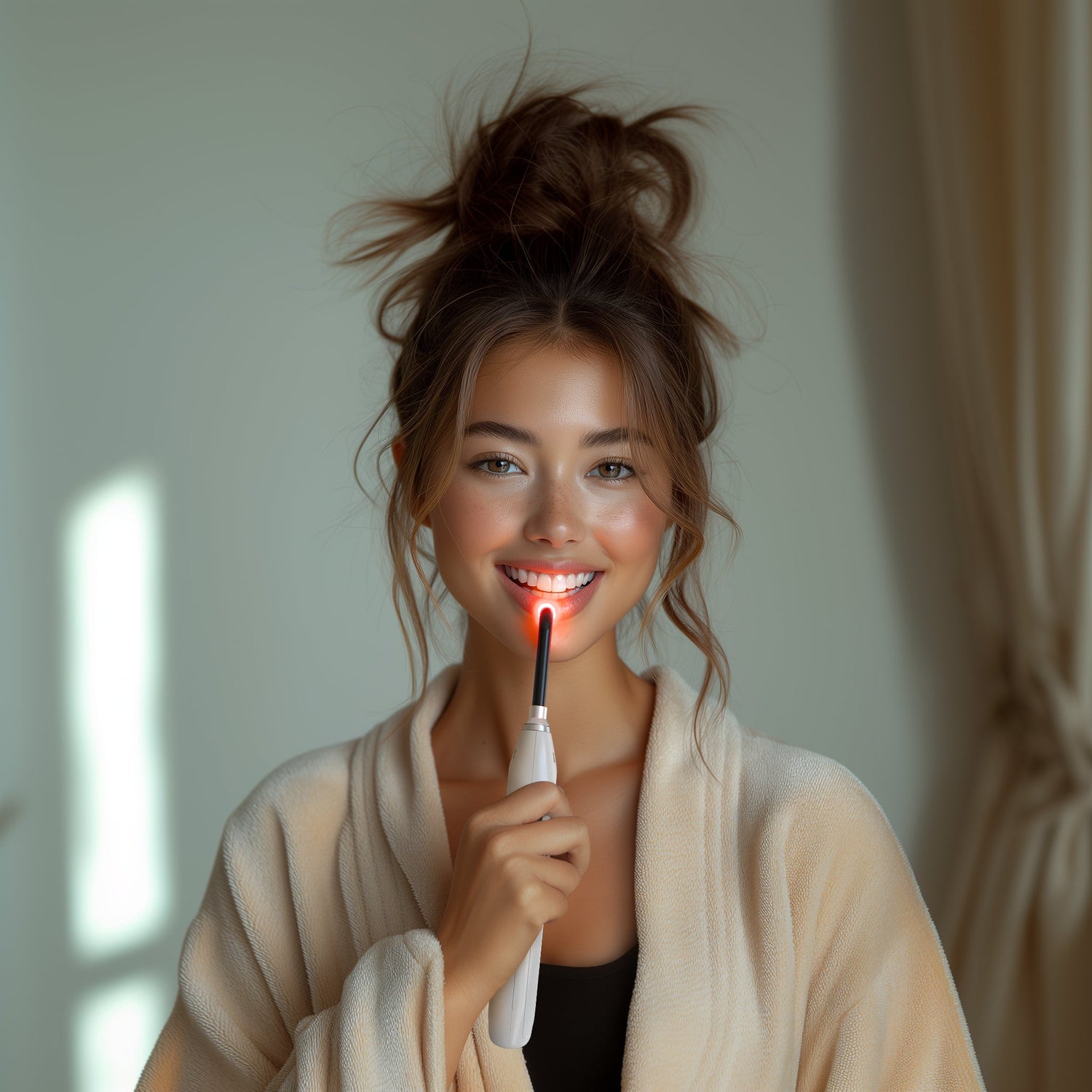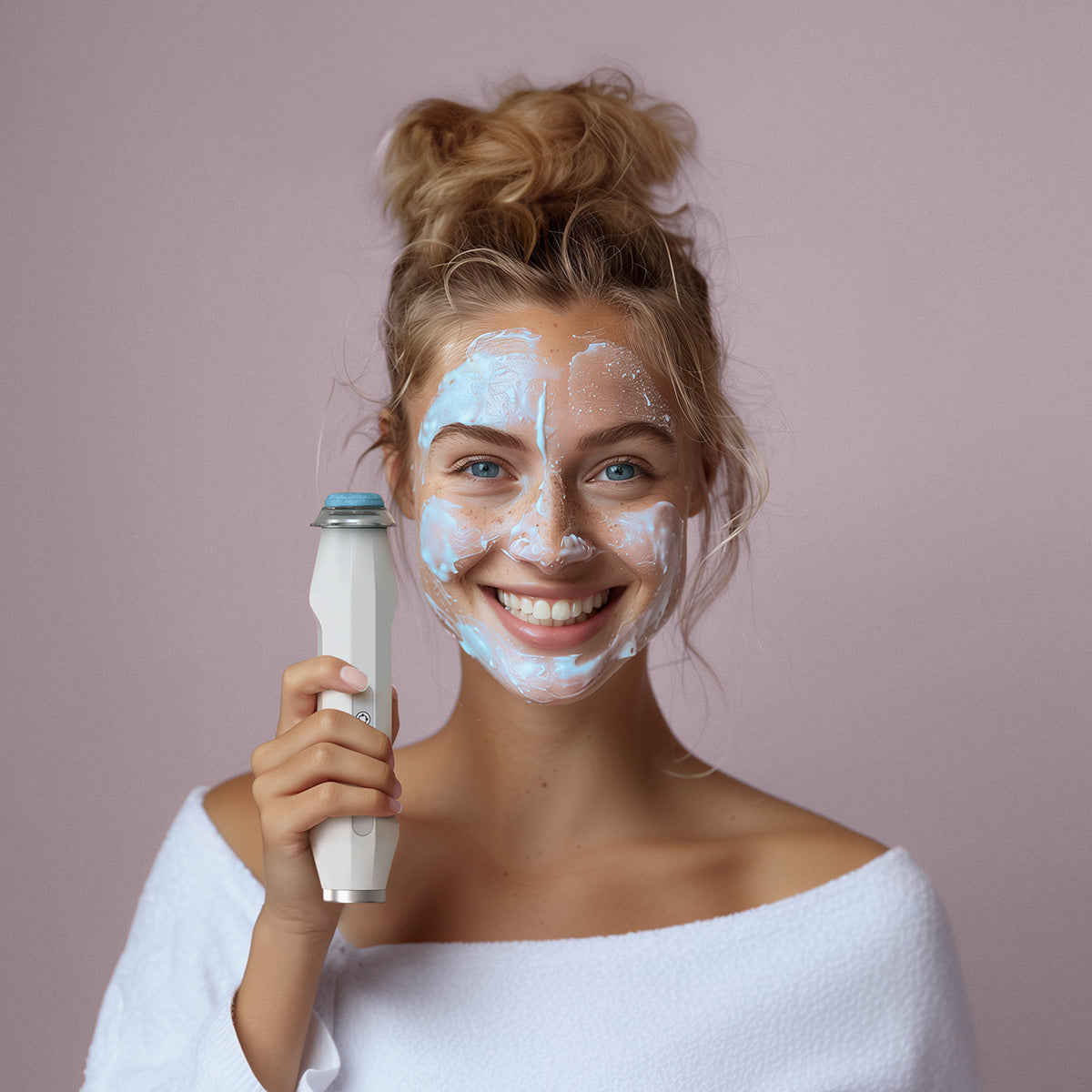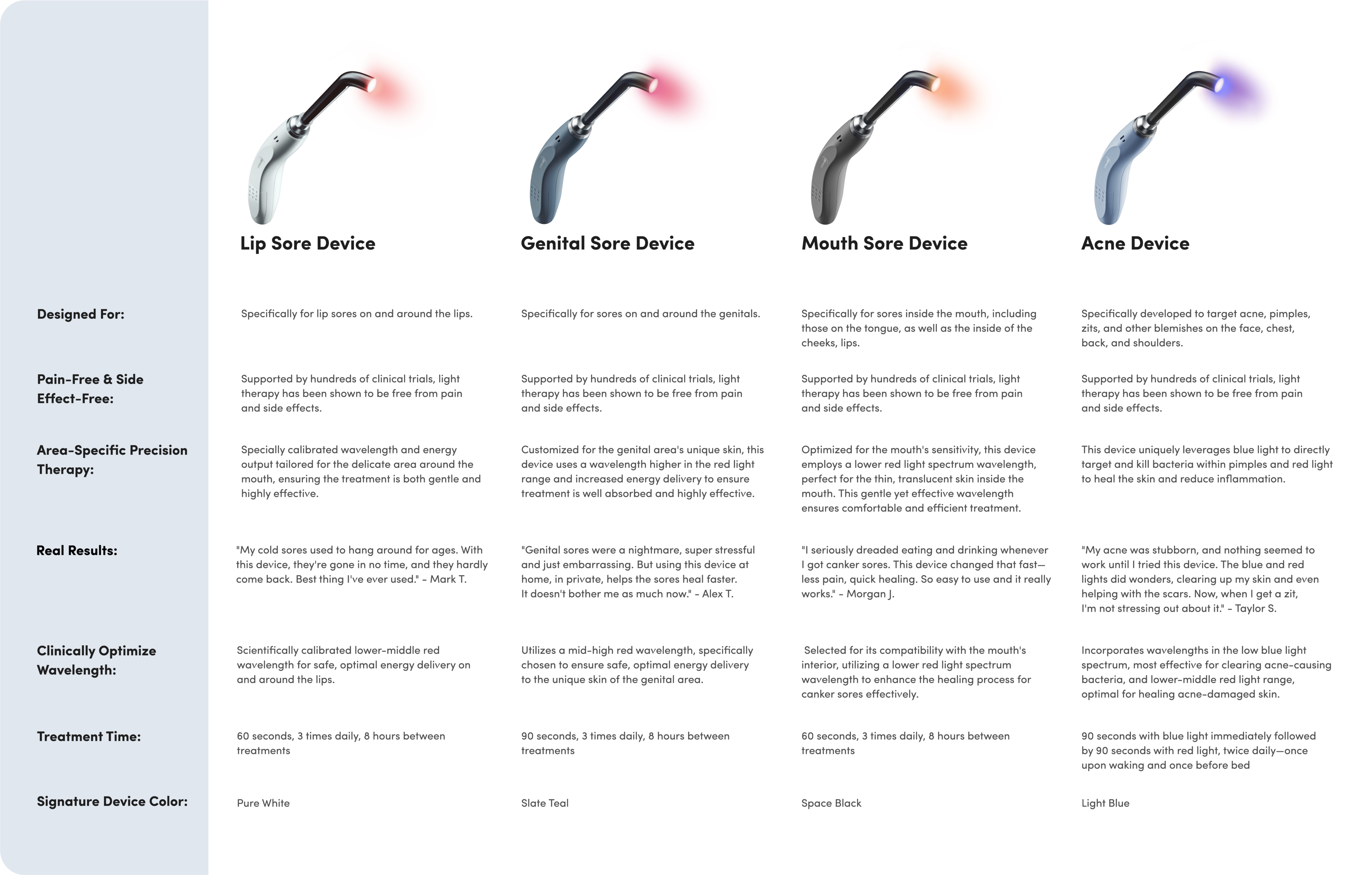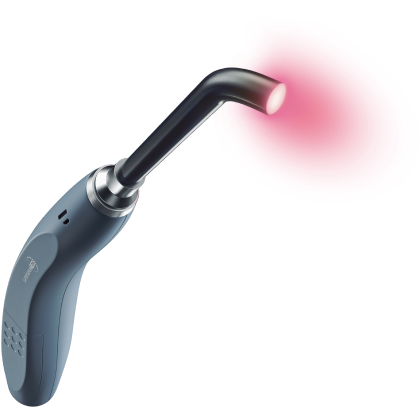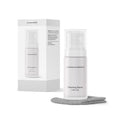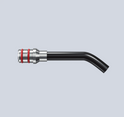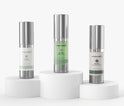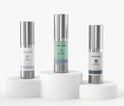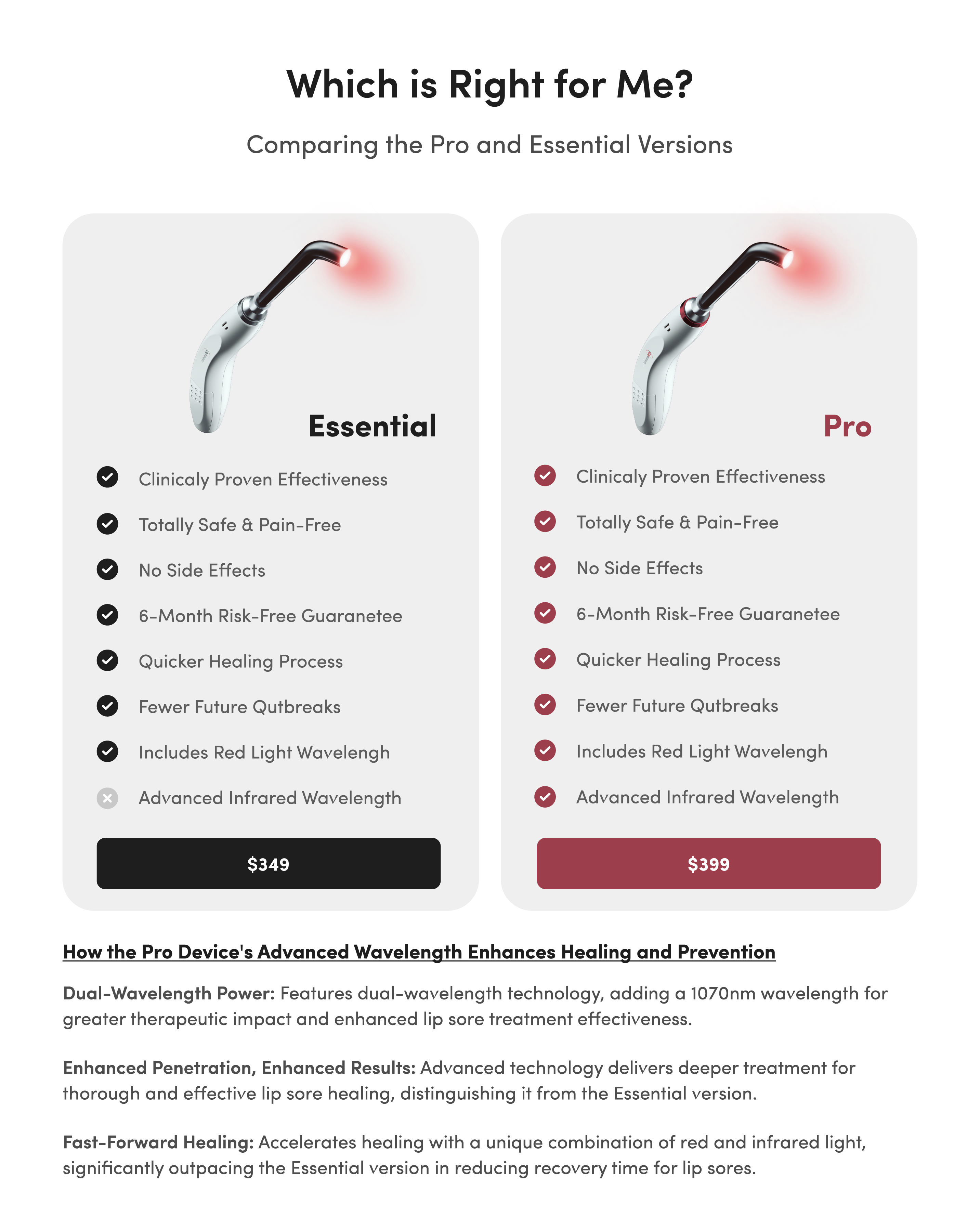Light Therapy for Acne: A New Device From Luminance RED

Light therapy gained popularity among estheticians and dermatologists as a skin treatment, and scientists are exploring its use for treating other ailments.
Modern technology now allows people to take advantage of light therapy treatments in the comfort of home, especially for conditions like acne. But is it safe? Does it work? What does clinical research say?
In this post, we examine light therapy for acne: how it works and the research behind it.
Can Light Therapy Really Help Acne?
Light therapy has several names, including phototherapy, low-level light therapy (LLLT), and photobiomodulation. Light therapy isolates specific colors, or wavelengths, of light from the visible light spectrum, applying them to targeted areas of the body. The different wavelengths of light produce different beneficial responses.
It’s a simple, completely noninvasive treatment for many skin conditions. Specifically, light therapy for acne is effective, well tolerated, and produces few (if any) side effects, particularly when compared to more traditional treatments for acne, like chemical peels and harsh medications.
For treating acne, red and blue wavelengths work best, especially when used together. You can visit a dermatologist or esthetician for professional light therapy treatments, but handheld devices are usually much more affordable, especially since consistent use is key for effective treatment.

Blue Light Therapy for Acne
Blue light fights acne because of the wavelength’s antimicrobial effect. Blue light kills acne-causing bacteria on the skin, preventing it from proliferating in clogged pores and causing inflamed acne breakouts.
Red Light Therapy for Acne
Red light is anti-inflammatory and promotes skin healing. These properties mean red light therapy reduces the irritation within inflamed pimples and helps them to resolve quickly.
Combination of Red and Blue Light Therapy for Acne
When used together, red and blue light therapy provide a powerful weapon in the fight against acne.
How Does Light Therapy for Acne Work?
To some, these results might sound far-fetched. How can light, on its own, produce such effects? Let’s take a look at how light therapy actually works against acne.
How Blue Light Kills Bacteria
In the case of blue light, energy from certain blue wavelengths of light causes the excitation of atoms and eventual self destruction.
How Red Light Heals Skin
For red light, mitochondrial photoreceptors absorb the light and use it to produce adenosine triphosphate (ATP), the energy source of cells. Researchers believe this energy-stimulating action is what leads to red light therapy’s wide range of benefits in the skin.
How Red and Blue Light Suppress Oil Production
Together, red and blue light therapy appear to significantly decrease sebum (oil) production in the skin. Since excess oil production is a major contributor to acne formation, this is excellent news. In particular, one study found that 415 nanometer (nm) blue light suppresses the growth and reproduction of sebum cells, while 630 nm red light reduces oil production in existing sebum cells.
Safety and Effectiveness of Light Therapy for Acne
These benefits occur from light administered via lasers or light-emitting diodes (LEDs) — though LEDs are considered safer, especially for home use.
One clinical study examined combination LED blue and red light therapy for acne treatment in patients with mild to severe cases of acne. Participants received two treatments per week for four weeks and were assessed at two, four, eight, and twelve weeks. At week four, their average acne lesion count had reduced by almost 50% — and at week 12 by more than 80%!
In another clinical study, participants with moderate facial acne received either red and blue light therapy daily for four weeks or a placebo. The control group saw no significant change, but the light therapy group saw major improvements in both inflammatory (decreased by 77%) and non-inflammatory acne (decreased by 54%). The treatment group also experienced a reduction in oil production, inflammation, and the size of sebaceous glands, with no reported side effects.
Researchers in both studies concluded that light therapy for acne is both safe and effective.
Risks and Side Effects of Light Therapy for Acne
One of the reasons for LED light therapy’s popularity is its lack of side effects. Unlike UV light, LED red and blue light does not harm skin cells or increase the risk of cancer.
There may be a small risk for some people with sensitive skin or who take specific antibiotics. Also, be sure to look for a device that’s safety tested and approved to treat facial acne.
As with any new treatment, it’s always a good idea to consult your healthcare provider about using light therapy and whether any contraindications exist in your case.
Is Light Therapy Better Than Other Acne Treatments?
Because up to 50 million Americans deal with acne each year, thousands of acne treatments are available. Prescription drugs, washes, peels, and topical medications are all designed to prevent or treat existing acne. But most of these treatments carry the risk of side effects: skin irritation, dryness, sun sensitivity, development of drug-resistant bacteria, and more. Some of the most common acne treatments include:
- Retinoids and retinoid-like drugs in creams, lotions, or gels
- Azelaic acid and salicylic acid creams or peels
- Tetracycline and other oral antibiotics
While many of these treatments are, in fact, effective to some degree, light therapy’s major advantage over other acne treatments is its lack of potential side effects. And most light therapy devices don’t require more than two to five minutes of treatment per day, making it an easy alternative.
Why Home-Use Devices Make a Difference
Light therapy for acne is a widely accepted treatment among dermatologists, but in-office treatments can cost up to $100 per session. Because light therapy requires regular use, treatments at a salon or medical office can add up quickly and put this resource beyond the reach of many people’s budgets.
At-home light therapy devices save money and time, and they tend to be more effective since owners can use them as often as necessary, even daily.
The New Luminance RED - ClearBeam Acne
Because light therapy is such an effective and safe method of managing acne, Luminance RED tested and developed a new device for spot treatments on the face.
The new Luminance RED - ClearBeam Zit Device is an FDA-cleared class II medical device designed to help you quickly treat your acne in just three steps:
- Clean and dry your skin.
- Kill acne-causing bacteria by treating your blemish with 90 seconds of blue light.
- Reduce inflammation and speed your skin’s healing with 90 seconds of red light.
Wavelengths of light like those used in the Acne Device have been shown in scientific research to heal or significantly improve pimples fast. In fact, 77% of pimples significantly improve or heal within 24 hours.

Frequently Asked Questions
What’s the recommended treatment when I get a blemish?
If you develop a blemish, administer treatment from the Luminance RED twice daily: once when you wake up and again before you go to bed. A single treatment session lasts for three minutes, with 90 seconds of blue light followed by 90 seconds of red light.
If you miss a treatment, don’t worry. Just be sure to wait at least eight hours between treatments.
Does the device really work?
Yes! The clinical data is clear: Red and blue light treatment significantly improve acne healing.
Is the device HSA/FSA eligible?
Yes! Acne treatments are usually covered by health savings accounts (HSA) and flexible spending accounts (FSA). However, it’s a good idea to check with your insurer to confirm the specifics of your plan.
How far away should I hold the device?
Rest the tip of the device gently against the blemish you’re treating. Alternatively, you can hold the tip up to 1 cm (0.5 inches) above the blemish.
Can I use my existing skin care products?
Yes! You don't have to change your skin care regimen to use the Luminance RED Acne Device. However, we do suggest washing and drying your face before treatment.
Some skin care products, like benzoyl peroxide, retinol creams, or products containing vitamin A or alcohol, can cause dryness or irritation.
You can find more information about the new Luminance RED - ClearBeam Zit Device here.


